Mixed report card: China’s influence at the United Nations
China is of growing importance to the UN system, and Beijing is aiming to capitalise on this influence at the world body.
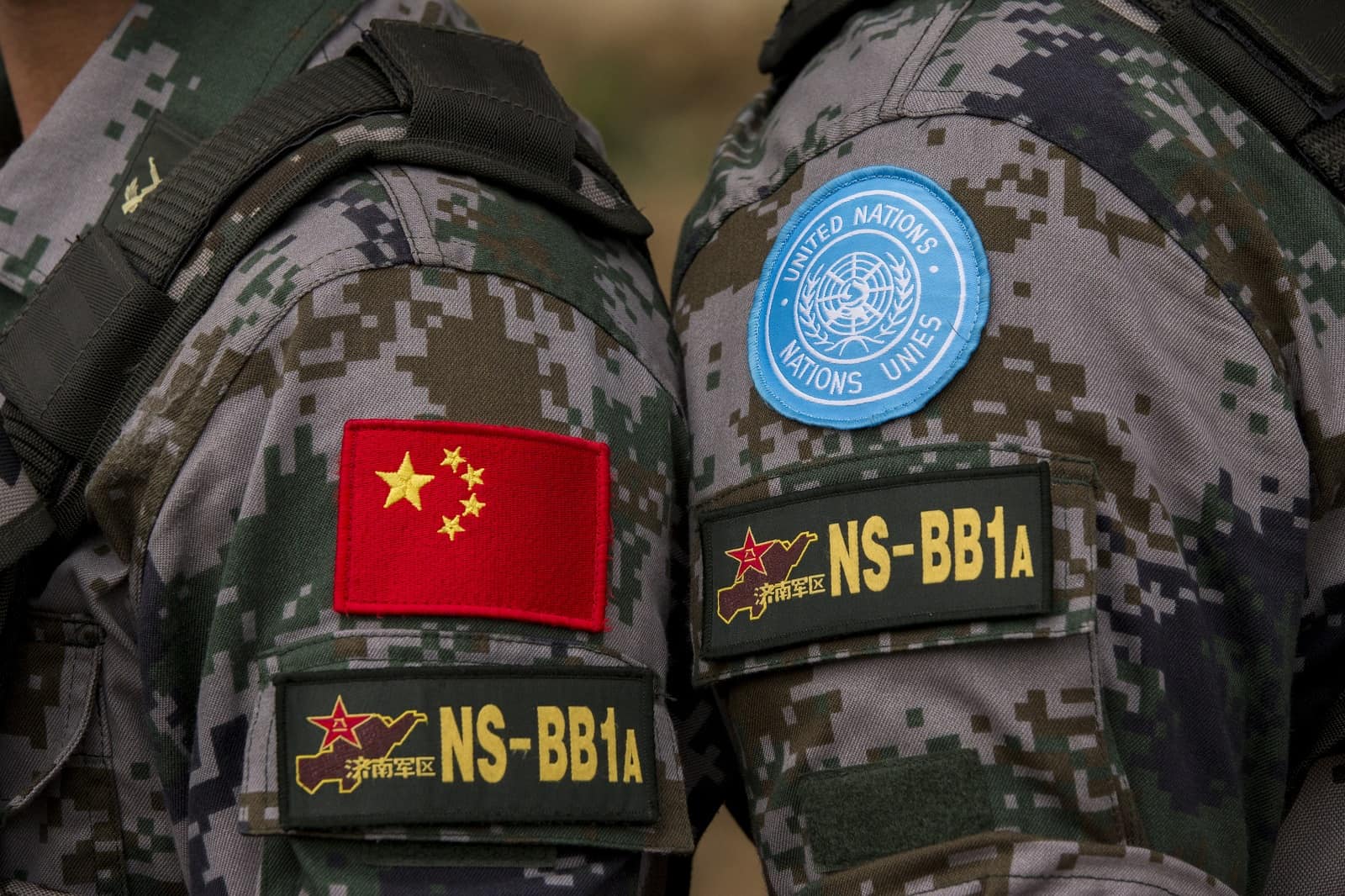
- After an initial period of diplomatic ambivalence at the United Nations, China now broadly seeks to reform the UN system from within through its “shared future” global governance vision — an agenda that downplays universal values in favour of championing the primacy of states.
- To that end, China uses existing UN structures and rules, no longer under-utilising the power afforded to it within the UN system, including as a veto-wielding permanent member of the Security Council.
- However, China’s contributions do not always translate into successful influence at the United Nations. Its efforts across various domains — whether in terms of funding, staffing, voting alignment, or drafting of UN language — often yield mixed results.
Executive summary
China is of growing importance to the United Nations. Beijing aims to exert influence at the world body to legitimise and disseminate its foreign policy values and interests.
This report contextualises China’s growing presence at the United Nations by examining publicly available data on four metrics that gauge Beijing’s success in steering the global governance agenda. Those metrics are: funding for UN departments, programs, and initiatives; staffing of executive-level personnel positions; voting in the UN General Assembly and UN Security Council; and the use of PRC-specific discourse and language in UN-generated documentation.
The United Nations has become progressively more reliant on China’s general contributions, and in turn China has used a combination of levers to elevate its position within the UN system. However, this report finds that China is still selective in its overall approach to UN participation and that efforts by the PRC do not necessarily translate into successful influence at the body.
The report makes three recommendations for UN stakeholders. First, a deeper understanding must be gained of what China contributes across different UN agencies and functional areas to establish a more complete picture of its multilateral input. Second, efforts should be made to shape China’s engagement in multilateral issues, in particular those that the PRC is yet to prioritise, such as refugee management. Third, it is vital to articulate an inclusive multilateral vision for a rules-based international order that specifies under which conditions China’s contributions are embraced, rather than framing PRC input solely as a source of concern.
Introduction
In October 2021, to mark the fiftieth year of the PRC assuming the China seat at the United Nations, including as a permanent five (P5) member of the Security Council, UN Secretary-General António Guterres gave a speech lauding it as “an increasingly important contributor to the work of the Organization and a major pillar of international cooperation”. [1] Such comments reflect China’s growing presence at the United Nations. In 2015 alone, China committed a fifth of the UN peacekeeping standby force; pledged US$1 billion over a decade towards the China–UN Peace and Development Fund; and shortly thereafter rose to the second largest funder of the UN regular budget. [2] Beijing’s broadening engagement was signified by the PRC–UN Belt and Road Memoranda of Understanding signed by various UN agencies, with the UN imprimatur legitimising President Xi Jinping’s signature policy initiative. China is currently the only state to lead more than one of the fifteen UN specialised agencies. PRC elites note that “[i]t’s a natural process” as China has “the right candidates” [3] to secure these key leadership posts. China is no longer a sparing veto user at the UN Security Council, having cast ten vetoes regarding the Syria crisis alone over the last decade.
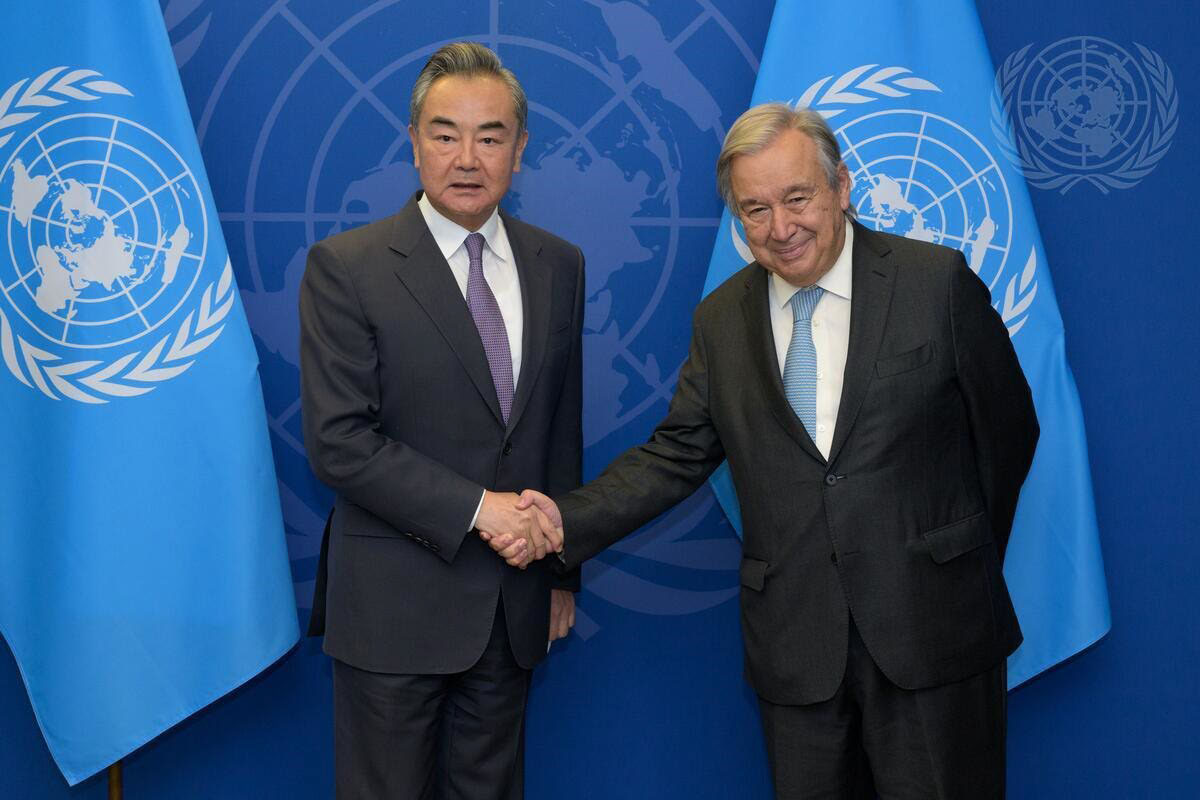
China promotes the view that it is “a builder of world peace, contributor to global development, defender of the international order, and provider of public goods”. [4] To that end, China positions itself as a crucial “promoter” and “constructor” of international organisations, with the ambition of making PRC viewpoints part of a “global consensus”. [5] It also pushes to insert its own global governance rhetoric of a “shared future” into UN documentation. In so doing, China counters the traditional UN focus on development, human rights, and peace and security as the means to promote just and stable societies, with its own state-centric approach that dismisses universal values and instead champions each state as unique.
The developing conventional wisdom holds that China is exerting influence in international organisations to legitimise and disseminate PRC foreign policy values and interests. [6] Growing alarm that China is succeeding in reforming the United Nations from within has real world effects. For example, the withdrawal by the Trump administration from various multilateral organisations was framed as a means of punishing institutions for “favouring China” and of deriding PRC international civil servants for lacking “independence from the Chinese Communist Party”. [7] The Biden administration return to prioritising the United Nations and multilateralism is similarly framed as part of US strategic competition with China. [8] UN Secretary-General Guterres laments that G2 rivalry means the “risk of a Great Fracture is real” on issues ranging from nuclear proliferation and climate change to the Covid-19 pandemic. [9]
This report contextualises China’s rising presence at the United Nations using publicly available data across four observable metrics that allow inferences to be drawn about China’s influence at the United Nations. The metrics are:
- funding for departments, programs, and initiatives, which is especially important with the United Nations currently searching for financial support for its expanding global governance agenda;
- staffing of executive-level personnel positions, which largely determine agencies’ work agendas and enable states to legitimise their foreign policy interests through multilateral guidance, practice, and standards;
- voting in the UN General Assembly, where China votes as one of 193 states, and voting in the UN Security Council, which has the primary responsibility for the maintenance of international peace and security under the UN Charter and where China maintains a veto vote;
- the use of PRC-specific discourse and language in UN-generated documentation such as UN General Assembly or UN Security Council resolutions, which set responses to specific issues and shape how international politics is understood globally.
The paper first details China’s history at the United Nations, offering context for the following section on China’s ambition to promote its global governance vision of a “shared future”. It then considers each of the four observable metrics and concludes with findings on China’s degree of participation at the United Nations and its level of success in achieving influence within the UN system.
PRC history at the United Nations
China is a founding member of the United Nations, though the People’s Republic of China (PRC) only assumed the China seat in 1971. Until that point, the Republic of China (ROC) occupied the China seat, with the Kuomintang asserting that the ROC retained representation of China, despite its defeat by the Chinese Communist Party (CCP) and relocation from the mainland to the island of Taiwan. From 1950 onwards, the PRC pushed to address the issue of determining the legitimate government and representative for the China seat at the United Nations. The yearly vote on the motion to switch the China seat representation from the ROC to the PRC lasted a decade, with the margins progressively moving towards favouring the PRC. US intervention changed the China seat vote to an “important question” in 1961, meaning that a two-thirds majority was needed to alter the representation. In October 1971, two-thirds of the UN General Assembly voted to support Resolution 2758 that moved to “restore all [China’s] rights to the People’s Republic of China and to recognize the representatives of its Government as the only legitimate representatives of China in the United Nations”. [10] The PRC assumed the China seat in the General Assembly the following month and at the UN Security Council shortly thereafter. [11]
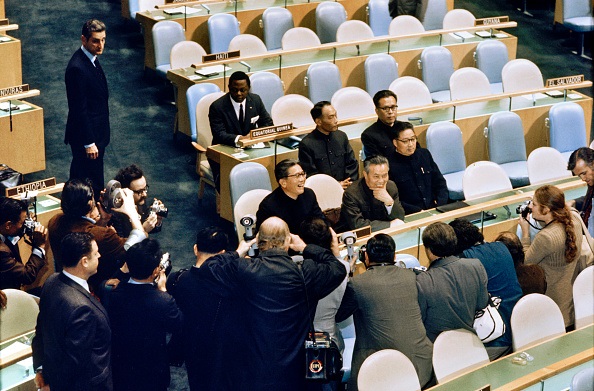
The PRC kept a reclusive posture during its first decade at the United Nations, reflecting the domestic turmoil of the Cultural Revolution. China pursued a fifth voting style, that is, not voting for or against or being absent or abstaining, but choosing not to vote while still present at the UN Security Council to signal rejection of the hegemonic system without impeding the Council in addressing international security affairs. [12] With its limited strategic interests, the PRC representation was labelled as an “ambassador look out the window”, [13] with only the occasional use of its veto powers.
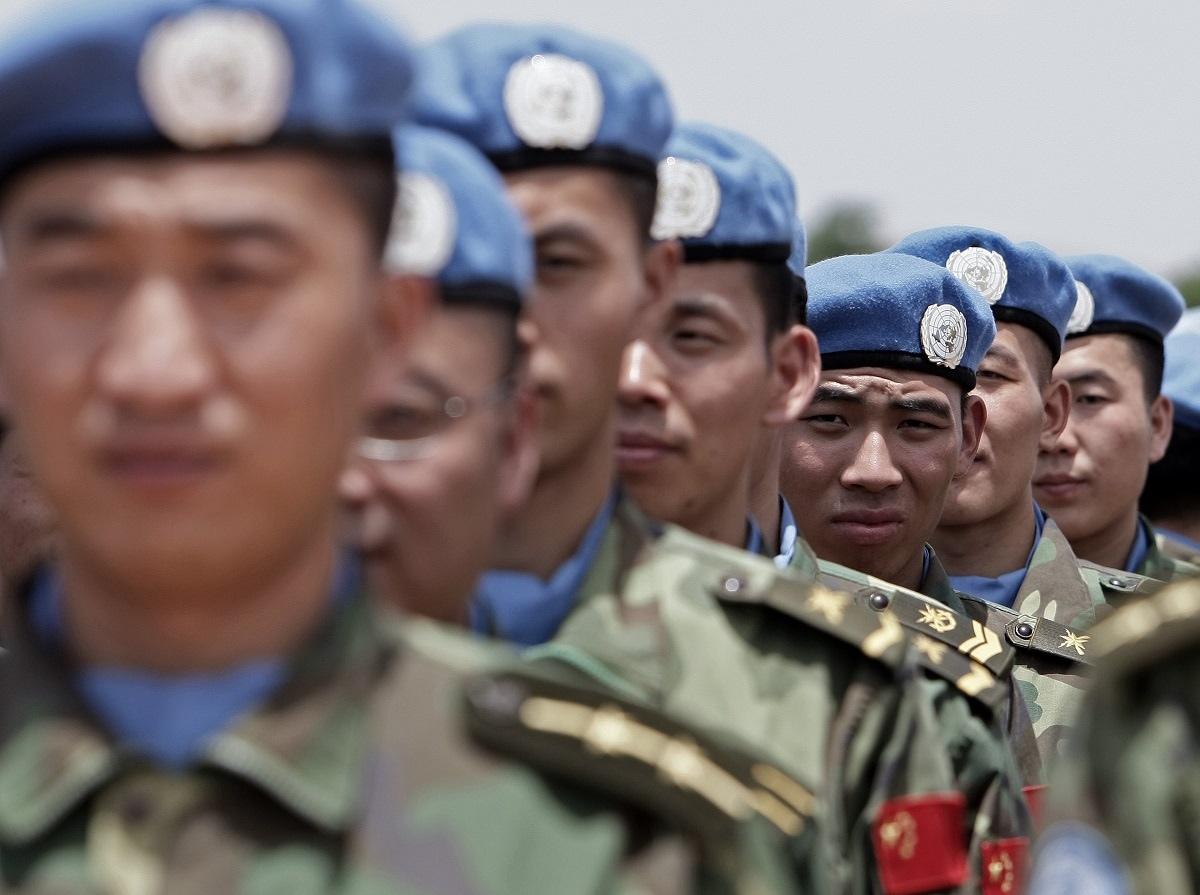
As China moved to reform and opening, it re-engaged with mainly abstention votes for the following decade, began contributing to peacekeeping funding in 1982, and dispatched its first peacekeeping personnel at the close of the 1980s. China voted for its first transitional administrative peacekeeping mission to Cambodia in 1992, dispatching China’s first significant UN peacekeeping troops with 800 engineering personnel serving on mission. China continued to abstain on Chapter VII resolutions, which do not require host-state consent, such as in response to the genocide in Rwanda and ethnic cleansing in the former Yugoslavia, with the exception of supporting the US-led and UN-sanctioned intervention in Somalia.
By the end of the 1990s, China was willing to support robust, so-called non-consensual peacekeeping operations under exceptional circumstances, voting to authorise a Chapter VII multinational force under all necessary measures to restore peace and security and later a transitional mandate for Timor-Leste. China’s efforts to support sweeping peacekeeping operations in Darfur, Liberia, and the Democratic Republic of the Congo were seen as key to getting these operations off the ground. China’s foreign policy orientation following reform and opening made UN participation a crucial element of China’s international presence, resulting in a shift from Beijing’s passive to active participation in the multilateral body over the course of four decades.
China’s “shared future” for global governance
China views the United Nations as a cornerstone for a state-led international order but works to reform the United Nations from within so its institutions can better execute President Xi’s vision of a “community of common destiny” or a “shared future”. [14] The PRC’s “shared future” concept is purposely nebulous and all-encompassing as a vision to showcase the superiority of China’s authoritarian system over democratic systems. China promotes its “shared future” as a means to advance its approach to global governance, applying the theme to cultural, development, environmental, political, and security affairs. [15] By definition, the concept promotes China’s global leadership with Beijing as the key node in a flexible global partnership network, shepherding states in joint pursuit of international peace and security. These international partnerships work through “dialogue, non-confrontation and non-alliance”, [16] so that China can achieve “win-win cooperation” with partners, irrespective of differing regime types and ideological persuasions. [17] China’s vision for a “new multilateralism” rests upon a “democracy in international relations” and an understanding that “[a]ll countries should jointly shape the future of the world, write international rules, manage global affairs”. [18] “Democracy” in this context is framed as a reversal of Western-led hegemony, with all states given an equal opportunity for consultation, irrespective of regime type or material endowment.
China is attempting to enact its own foreign policy approach within and upon the UN system under the guidance of a “shared future”.
Despite the rhetoric, China’s state-centric “shared future” global governance vision is rooted in a distinctly hierarchical view of power. [19] Even as China emphasises the “democratisation” of international relations in pursuit of a multipolar order, it separates “major power” or “big countries” from “smaller countries”, which should in practice respect their reduced foreign policy space given their more limited material endowments. These smaller states may be consulted and can have some voice in international politics to the extent that their views do not limit great powers, such as China, in achieving their interests. [20] Moreover, China’s “shared future” vision rejects the acceptance of and the importance of universal human rights. China promotes a “paradoxical universal exceptionalism” [21] in which each state is on its own unique path to modernity and development, and so the international community should “embrace civilisations of various forms, and must accommodate diverse paths to modernisation”. [22] In so doing, China’s view is that universal human rights are not universal at all, as each state can select what values, principles, and practices suit its unique national conditions in regards to human rights. Beijing’s explicitly anti-liberal position is in contrast with the UN’s focus on human protection — a purposely liberal, person-centred conception of security concentrating on an individual’s security and intrinsic rights. [23]
China is attempting to enact its own foreign policy approach within and upon the UN system under the guidance of a “shared future”. The UN’s “three pillars” approach nurtures human protection through a combination of development, human rights, and peace and security. By implication, this UN promotion places emphases on accountability, inclusivity, and transparency regarding how states operate. By contrast, China’s foreign policy approach puts an emphasis on a “triadic model”, [24] using economic development, social stability, and a strong state infrastructure to secure international peace and security. The UN’s human security focus does not negate economic development or effective state institutions in delivering human security. China, in that sense, selectively leverages a UN intellectual lineage that underscores economic security as key for human security. [25] For example, China can promote themes of economic security in support of social stability as compatible with the UN view that underdevelopment affects conflict. Similarly, China can speak to Secretary-General Guterres’ more expansive theme of addressing human rights concerns related to poverty, climate crisis, and inequality when it argues that economic and social rights need more attention at the United Nations. [26] China also exploits the uneven successes of the complex and ambitious human protection agenda to insert its own course correctives, which ultimately seek to neuter liberal, person-centered aspects of human protection efforts.
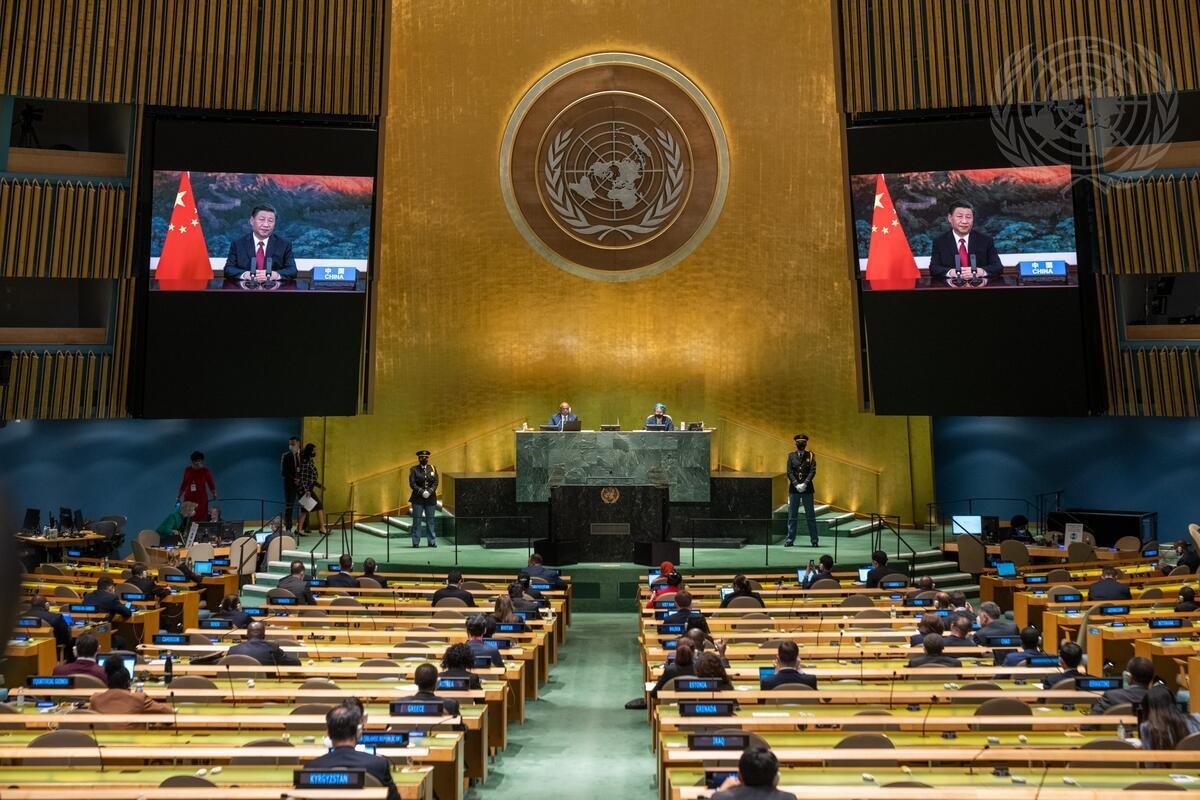
Beijing bills itself as a leading provider of “global public goods”, most recently proposing the Global Development Initiative (GDI) to redress the impact of Covid-19 on global development, and the Global Security Initiative (GSI) as China’s vision for a new security order. The GDI was raised in September 2021 during President Xi’s speech at the opening of the 76th United Nations General Assembly, channeling China’s development cooperation efforts into one focal point, offering China’s principles and broad support as a developing nation for a greener, fairer, more innovative model to achieve the UN 2030 Sustainable Development Goals. [27] The GDI is explicitly multilaterally oriented, with PRC officials organising more than 50 member states to join its UN Group of Friends of the Global Development Initiative and pointing out that more than 100 countries — and the UN Secretary-General himself — have expressed support. [28]
The GSI was announced in April 2022 in President Xi’s keynote speech at the Boao Forum. China claims that the initiative is based on non-interference and a rejection of “power politics” as the means to achieving global security. [29] The GSI factors in a number of considerations: from Beijing’s concerns regarding CCP regime security, to singling out the “Western-led security order” as the source of global governance problems, and deflecting global criticism of China’s stance on the Russian invasion of Ukraine, which Beijing characterises as Russia protecting its common and indivisible security. China repeatedly links the GSI to the UN Charter. President Xi has emphasised “our goal is to work with parties to champion the spirit of the UN Charter” [30] and referenced China’s security vision as evidence of his commitment to upholding global order.
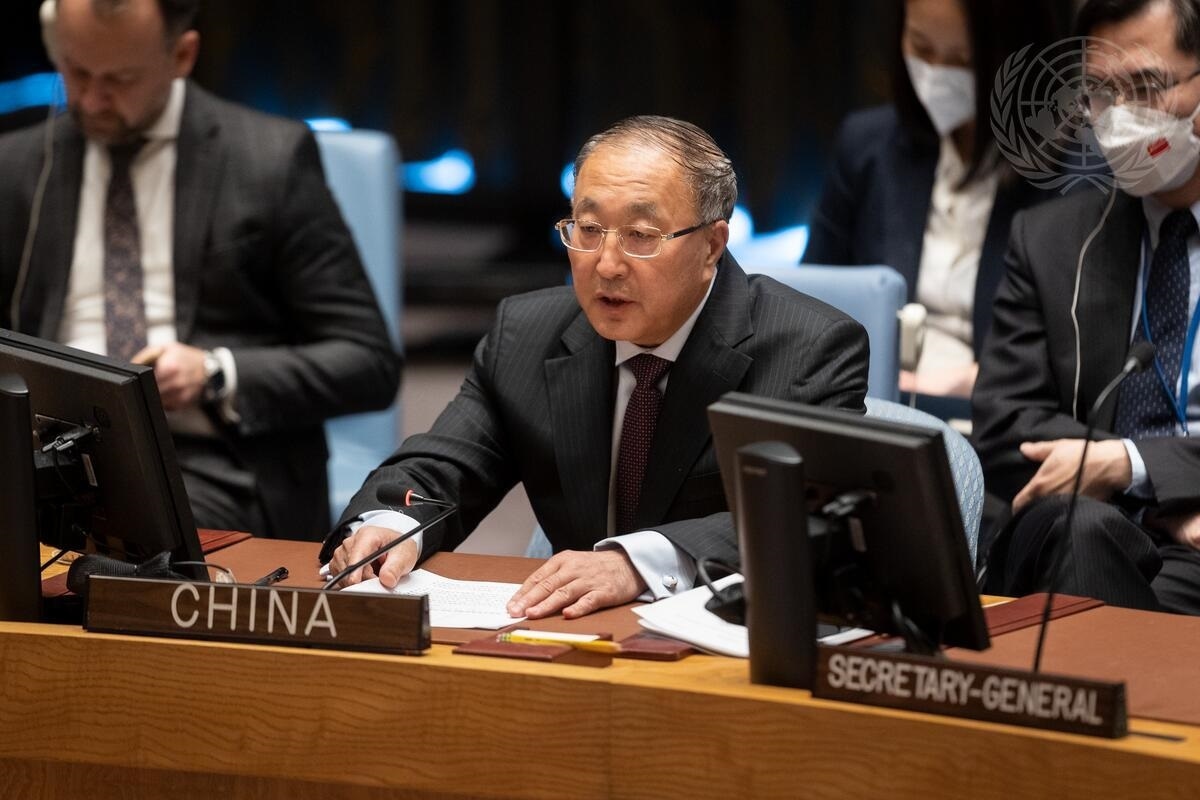
China used its UN Security Council rotating presidency in August 2022 to more closely align the GSI with notions of UN-sponsored collective security, asserting that “the founding mission of the United Nations is to achieve common security for all”, and promoting China’s “vision for common security in view of the current predicaments in international security”. [31] In practice, this is undermined by the fact that the GSI’s emphasis on each state defining its security needs may be detrimental to achieving collective security. The United Nations is by no means the only platform through which GSI is pursued. China is also promoting the initiative within the BRICS grouping (Brazil, Russia, India, and South Africa) and bilaterally, with endorsement from a handful of states, including Cuba, Indonesia, Pakistan, and Syria. [32]
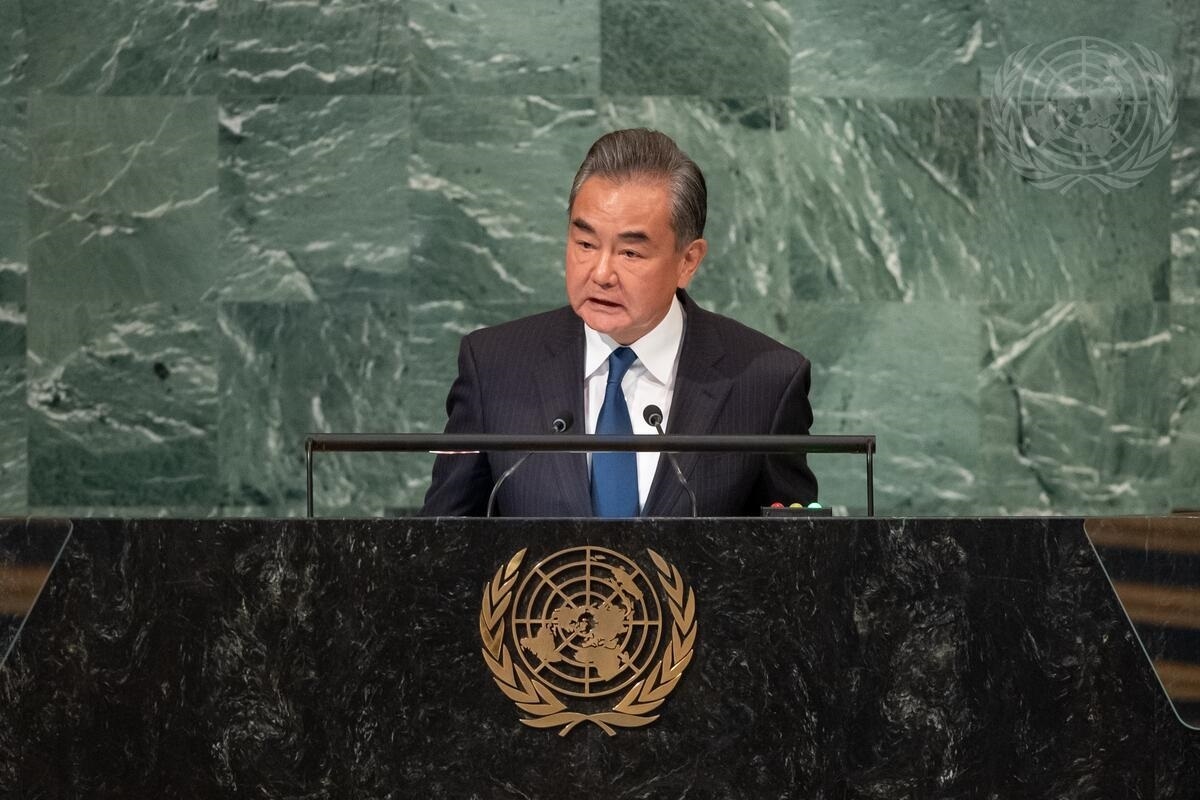
Like the “shared future” vision, these two new initiatives under President Xi, both still in their infancy, remain vague at best. Broad and shapeless, the initiatives give China maximum flexibility when it comes to answering for its own security and development shortfalls, while still promoting PRC interests at the United Nations. For example, although it is unclear how the Global Development Initiative supports the Sustainable Development Goals, PRC officials tout the initiative’s anti-liberal perspectives, promoting “development as the master key to addressing all problems” and the precursor to securing human rights. [33] It is reasonable to expect Beijing to recalibrate these two initiatives over the coming years, with greater clarity about their means and outcomes. The Global Development Initiative and the Global Security Initiative complement the Belt and Road Initiative (BRI), which uses infrastructure projects to promote connectivity and economic growth. What is clear about the new initiatives is that they seek to tie broader development goals with China’s specific security concerns, [34] and are a first effort at linking a “shared future” into targeted policy. For example, China now frames its UN Peace and Development Trust Fund as part of the Global Development Initiative.
Funding
The UN budget matches the institution’s expanding and ambitious work agenda. In 2012, the assessment of member states’ contributions to the UN regular budget was US$2.59 billion. In 2022, the figure rose to US$3.15 billion. [35] Member states finance the United Nations through two streams: voluntary contributions and assessed payments, which are treaty obligations primarily linked to a state’s percentage of global national income. In 2021, 56.20 per cent of UN revenue was derived from voluntary earmarked contributions and 11.27 per cent from voluntary un-earmarked contributions, while assessed contributions only accounted for 28.23 per cent. [36] In this respect, the “power of the purse” is a means to shape the UN agenda. As one US official plainly stated: “[o]ur influence at the UN is greatest when we pay our bills in full and on time”. [37] Indeed, payment of UN dues on time and in full is critical for the organisation’s function, with UN Secretary-General Guterres noting that “unpredictable cash inflows … seriously threaten” UN operations. [38] China’s sizeable economy and repeated rhetorical commitment to the United Nations marks it as a front-runner to contribute to UN costs. [39] This is especially the case given the annual debate about whether the United States will ever pay its contributions in full. For example, in April 2021, the US budgeted US$300 million to begin paying down its peacekeeping arrears of more than US$900 million. [40] PRC officials emphasise that “[f]inance serves as the foundation and an important element underpinning UN governance” [41] , reminding others that the United States is “the largest debtor” to the UN system. [42]
China’s sizeable economy and repeated rhetorical commitment to the United Nations marks it out as a front-runner to contribute to UN costs.
By 2019, China had become the second largest financial contributor to the UN regular budget, surpassing Japan and only behind the United States. Figure 1 (left) shows the assessed contributions to the revenue for UN organisations. China’s contribution increased from 3.04 per cent in 2010 to 13.13 per cent in 2020, with US contributions at 24.00 per cent and Japan’s at 8.58 per cent. Comparatively, France, the United Kingdom, and Russia, which are the other three permanent UN Security Council members, give contributions of 4.32 per cent each on average.
Controlling for country GDP, however, China’s assessed contributions lag other top government donors. Figure 1 (right) shows that since 2013, apart from the United States, all other top government donors have been contributing, on average, 0.02 to 0.03 per cent of their GDP to UN assessed contributions. By comparison, China’s assessed contributions remain, on average, at 0.01 per cent of its GDP. Other selected G77 countries with larger economies have a relatively stable percentage of assessed contributions to the UN system (Figure 2). In 2021, Argentina, Brazil, and Saudi Arabia contributed around 0.015 to 0.018 per cent of their GDP to UN assessed contributions, which is higher than China’s 0.0101 per cent. Such discrepancy suggests that there is room for China to contribute more to UN assessed contributions on aggregate terms in the future.
Despite China’s well touted status as the second largest government donor of assessed contributions, its voluntary contributions — the largest UN financial instrument — are extremely modest. Figure 3 shows China was not among the top ten donor states for earmarked and un-earmarked voluntary contributions between 2010 and 2021. For the voluntary un-earmarked contributions, each of the top ten donor countries had an average share of between three and fourteen per cent. By comparison, China had an average share of only 0.66 per cent during 2010–21, with the level remaining very stable over time. In contrast, voluntary earmarked contributions permit donor countries to set conditions on how the funds are used. [43] The United States led the share of earmarked contributions in 2021 with 31.5 per cent, followed by Germany with 17.2 per cent, and Sweden with 5.34 per cent. China’s share of earmarked contributions is frequently the lowest compared with the top ten donor countries. It remained at around 0.37 per cent from 2010 to 2015, before increasing slightly to 1.4 per cent in 2016, and then gradually decreasing once more to 0.503 per cent in 2021.
China has recently started making high salience voluntary funding offers, however, signalling strategic investment in issues of particular interest to China, presumably to boost its influence in those areas. [44] To a certain extent, selective voluntary funding can buy more influence for member states than assessed contributions can. Member states can threaten to withdraw voluntary funding without breaching legal obligations. [45] Examples include the sole funding by China of the UN Global Geospatial Knowledge and Innovation Centre to map human behaviour, infrastructure, and topography worldwide in support of the 2030 Sustainable Development Goals. Another is President Xi’s offer of a US$1 billion pledge during the 2015 UN General Assembly to establish the UN Peace and Development Trust Fund. By 2016, China had committed US$200 million to the fund, with planned instalments of US$20 million annually for a decade. President Xi announced a five-year extension of the fund until 2030 in his 2020 UN General Assembly speech. [46] The Fund is split evenly between the Secretary-General’s Peace and Security Sub-Fund and the 2030 Agenda for Sustainable Development Sub-Fund. A steering committee is responsible for prioritising projects to be funded, identifying adjustments to funding amounts, and monitoring and evaluating the projects. [47] In contrast to other member state-sponsored funds, this committee is dominated by PRC officials — the UN Under-Secretary-General for Economic and Social Affairs, the PRC UN representative, and two directors-general from PRC ministries. The Fund supports a number of projects that reinforce the Belt and Road Initiative’s relevance towards UN Sustainable Development Goals. More than a third of the projects approved since 2018 under the 2030 Agenda for Sustainable Development Sub-Fund have titles that reference the Belt and Road Initiative. [48]
Figure 4 shows the UN Peace and Development Trust Fund project budgets approved by UN agencies for 2016–20 and highlights the three agencies that received the most project funding during the period: the UN Department of Economic and Social Affairs (US$22.7 million), the UN Office of Counter-Terrorism (US$7.9 million), and the UN Department of Peacekeeping Operations (US$7.7 million). While the support is welcome, these are meagre amounts in comparison to other donors or indeed overall budget needs. [49]
Figure 4: See endnote 50 for source information. [50]
In another example, as of April 2022, the COVAX (Covid-19 Vaccines Global Access) platform led by the World Health Organization and GAVI, The Vaccine Alliance, has secured commitments from China for US$100 million (0.806 per cent of GAVI total assured resources). Though an impressive contribution, China’s commitment is far lower than other leading contributors — the United States has committed US$4 billion, Germany US$1.65 billion, and the United Kingdom US$735.2 million — though higher than top-contributing G77 countries including Brazil (US$86.7 million), Saudi Arabia (US$150 million), and Kuwait (US$50 million). [51] China supplied more Covid vaccines abroad than the total GAVI stockpile as of the end of 2021, selling close to 95 per cent of its 1.26 billion dose stockpile abroad. By contrast, China donated only approximately 110 million Covid vaccine doses through COVAX. [52]
Staffing
China is making a concerted effort to secure executive leadership posts within the UN international civil service, heading UN agencies located in the Senior Management Group and the Chief Executives Board. [53] China identifies these headships as an important lever to advance PRC interests through the United Nations as the positions are endowed with organisational control to direct and execute their agency’s agenda.
Although all UN officials are to be impartial, the reality is that “[politics] has always scented senior UN appointments”. [54] These sought-after posts connect home capitals to the United Nations, so nationality is an asset for appointees. [55] Western states currently control the international peace and security affairs leadership positions, indicative of these considerations. For Chinese executive leaders, their “nationality is an asset, helping to open doors at the highest levels”, [56] congruent with China’s growing multilateral presence and capital. These PRC leaders are expected to export China’s international vision and foreign policy. [57] This can mean appropriating UN authority and legitimacy for PRC foreign policy interests when linking UN agencies’ work to BRI projects or when restricting Taiwan’s diplomatic space, for example. [58] The former head of the UN Department of Economic and Social Affairs (DESA) Wu Hongbo noted “as a [Chinese] international civil servant, when it comes to Chinese national sovereignty and security, we will undoubtedly defend our country’s interests”. [59]
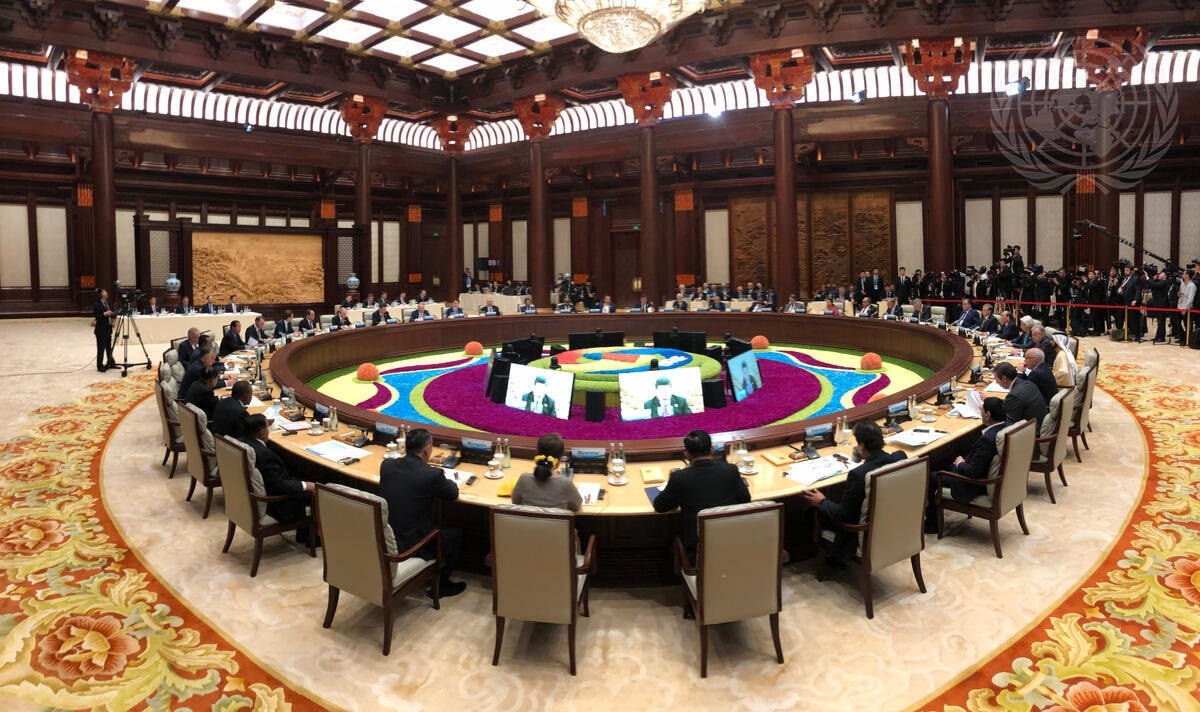
China has sought to compete for executive leadership posts at UN specialised agencies focused mainly on technical remits. China secured its first executive leadership post in 1997, and it took almost a decade to lead its first UN specialised agency, the World Health Organization, in 2006. PRC officials have led DESA since 2007, with diplomats noting “DESA is a Chinese enterprise, everybody knows it and everybody accepts it.” [60] DESA is an in-house UN think tank and conference coordination department, once considered a “UN backwater”, but helming this portfolio reinforces China’s claim to global development leadership and having general awareness of programmatic initiatives on economic, environmental, and social issues. [61]
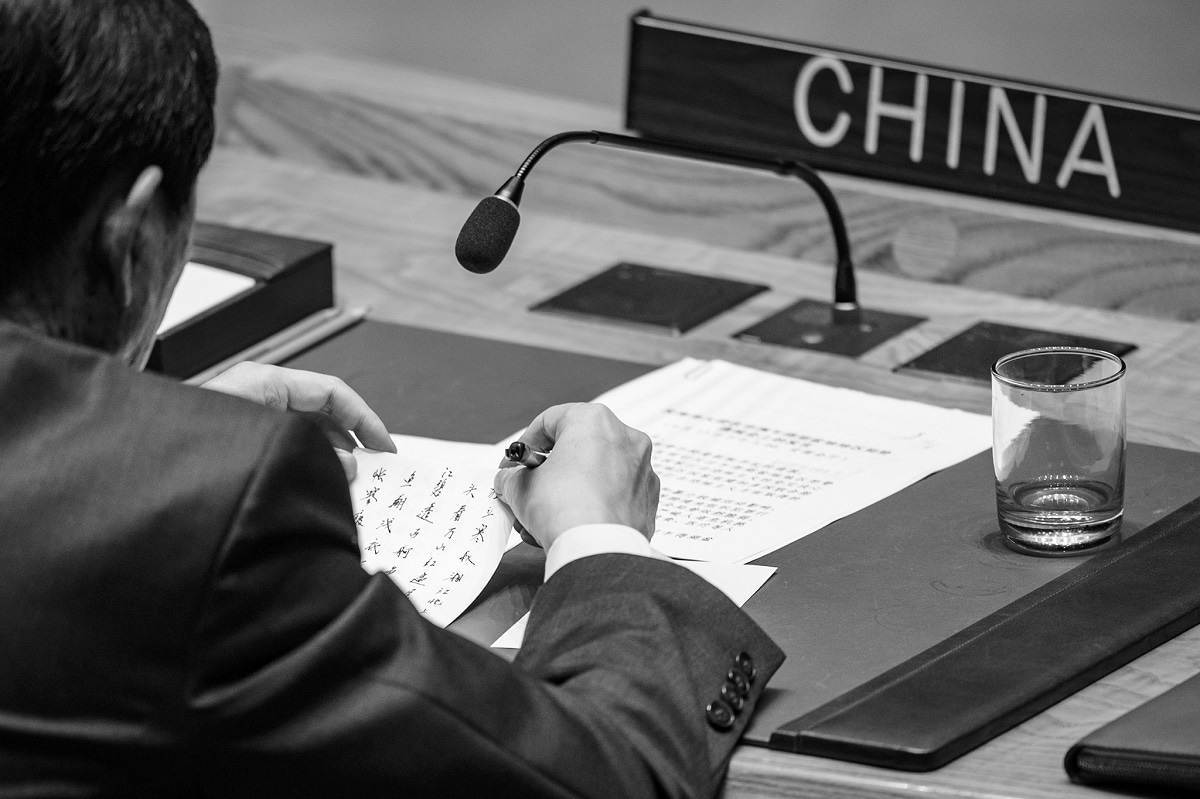
China is currently the only country to lead more than one UN specialised agency, heading the Food and Agriculture Organization and the International Telecommunication Union. Beijing secured these roles at a time when there was relatively little interest in multilateral governance agencies, leading some states to actually withdraw their membership, and facilitating China’s ability to manoeuvre for leadership-level positions. For example, in the late 1990s, Australia and the United States officially withdrew from the UN Industrial Development Organization. By contrast, China maintained membership, heading the agency from 2013–2021. China also holds two more political leadership positions in the UN Secretariat: the Deputy Special Representative of the Secretary-General for the UN Mission in South Sudan, appointed in May 2020, [62] and its first ever special envoy role, the Special Envoy for the Great Lakes Region of Africa, appointed in January 2019, which was secured “at least in part [as] the result of Chinese lobbying”. [63] These more recent political appointments were facilitated by US decline in multilateral leadership under the Trump administration, following actual [64] or threatened US withdrawal from a litany of international agreements and agencies, including the World Health Organization. [65]
However, data on UN staffing levels from 1971 through to September 2022 offers important context for these headlines. [66] As Figure 5 shows, China, along with Russia, has secured the lowest number of executive leadership posts among the permanent (France, Russia, United Kingdom, United States, and China) and aspiring permanent members (Brazil, Germany, India, and Japan) of the UN Security Council. Out of 482 executive leader postings between 1971 and September 2022, China secured only 15. [67] Moreover, China is yet to lead a high-profile agency covering international peace and security matters, which have been successively held by France, the United States, and the United Kingdom. [68]
Figures 5a and 5b: See endnote 69 for source information. [69]
Nor has China always been successful in securing these executive leadership positions. China’s failed bid to lead the United Nations Education, Scientific and Cultural Organization (UNESCO) in 2017 had Beijing withdraw its candidate after losing in the third round of voting. [70] In 2020, the Chinese candidate to lead the World Intellectual Property Organization was defeated by a Singaporean candidate favoured by many Western countries. [71] China’s 2019 nominated candidate to lead the UN Office on Drugs and Crime and concurrently the UN Office at Vienna was not selected by the UN Secretary-General. [72] Concerns about PRC leaders pushing candidates who favour their national interests have sparked closer scrutiny of executive leadership elections, with coordinated pushback in support of alternate candidates. China is also constrained by its relatively limited experience in leading the resolution of complex peace and security issues. Ongoing rumours of PRC interest in heading the UN Department of Peace Operations appear unlikely to eventuate as there are few PRC officials with the management, operational, and policy experience to lead the high-profile agency. [73]
General Assembly voting
Analysing UN voting patterns is another means to understand China’s role and clout in the UN system, focusing on the UN General Assembly and the UN Security Council. The UN General Assembly voting record is a conventional source to measure state preferences as these non-binding votes reflect the commitments and strategic interests of all member states. Figure 6 shows all member states’ UN General Assembly voting ideal points to determine the positions of China vis-à-vis other countries for the period 2000–20. [74] The voting “ideal point” estimates assess how similar a country’s voting pattern is to another country in a given year. Like a median voter diagram, it also shows if the two countries are voting more similarly with each other in one year compared to the next, and which of the two countries makes the move. For example, in 2020, a country’s ideal point hovers around 3.0 if it votes close to the United States; or, it hovers around -2.0 if it votes close to Cuba. The estimates are comparable over time as they are derived from comparisons of identical resolutions.
As expected, China votes dissimilarly to the United States, the United Kingdom, and France, and votes closer to Russia. It is important to note, however, that the data does not support the popular claims of a China–Russia voting bloc as there is a consistent distance in voting between the two countries. Though the China–Russia voting gap has somewhat narrowed since 2015, it is still not as small as the UK–France voting gap. Instead, China votes closer to the “Group of 77 plus China” members consisting of Global South countries that strive to maximise their negotiating capacity in the United Nations. [75] The dark grey lines in Figure 6 show the average ideal points by countries’ income level. Except for high income countries, countries in different income brackets share similar and consistent ideal points over the two decades. Since 2015, China’s positions have moved closer to these non-high income common ideal points. [76] In contrast, the dark grey lines representing the mean ideal points of low income to middle-high income countries are consistent over the period. These states are therefore not voting more closely to China. Rather, China is making a greater effort to position its voting more closely to that of low income to middle-high income countries, by supporting others’ policy positions. Such movement is possible for China as UN General Assembly votes are less costly in that they only infrequently involve considerations of vital national interests. But it does not suggest Beijing is wielding greater influence or shaping the voting patterns of other countries.
As expected, China votes dissimilarly to the United States, the United Kingdom, and France, and votes closer to Russia.
Examining a subset of UN General Assembly votes identified as relating to human rights issues is also illuminating. China has long placed high importance on human rights resolutions and votes consistently on these issues. [77] Figure 7 measures the percentage of a country’s UN General Assembly human rights votes that are the same as China’s in a given year, allowing an analysis by the country’s region, income, and democratic level. All lines are fairly consistent through 2010 to 2021. In other words, China’s greater UN involvement since 2015 has not translated into greater influence on targeted countries to vote more in line with China. It is also notable that South Asian, Latin American, Middle Eastern, and African countries, and non-democratic countries, vote more similarly to China than their counterparts outside those regions, yet taken altogether, low-income countries are not that different from middle-income or high-income countries in voting similarity with China.
Security Council voting
China holds permanent membership in the UN Security Council, which has the primary responsibility for the maintenance of international peace and security under the UN Charter. Figure 8 shows the number of UN Security Council draft resolutions vetoed by permanent members since 1971. The veto has been used relatively sparingly by the P5 in comparison to the 60 resolutions passed on average each year since 1990.
Figure 9 shows the number of UN Security Council vetoed resolutions by permanent members in the immediate post-Cold War period through to the present. Vetoed resolutions are classified into different regional focuses based on their agenda items listed on the UN website. France and the United Kingdom did not exercise their veto during the period at all. China did not veto any UN Security Council resolutions between 2000 and 2006. China began to veto together with Russia in 2007, rejecting what it saw as unnecessary intervention in the domestic affairs of Myanmar, Zimbabwe, Venezuela, the Democratic People’s Republic of Korea (North Korea), and most frequently Syria. However, China did not join Russia in vetoing some other resolutions on Syria, and on Cyprus, Bosnia, Georgia, Ukraine, and Yemen. It most recently abstained on Security Council votes regarding the Russian invasion of Ukraine. China’s vetoes are driven by longstanding concerns about setting a precedent for foreign-imposed regime change that could one day target CCP control. [78]
Drafting UN language
President Xi has identified that China is weak in discourse power — “the ability to exert influence over the formulations and ideas that underpin the international order”. [79] Inserting PRC language into UN institutions and documents is Beijing’s preferred way of bolstering China’s discourse power and thereby shaping global understandings and implementation of its model of global governance. Phrases such as “joint contribution”, “mutual benefit”, “win-win cooperation”, “sincerity”, “shared future”, and “community” are carefully selected signals that promote China’s international policies and diplomatic interests. [80] In strengthening its presence at international institutions — using innovative diplomatic practices and by developing cogent narratives — China can produce a “persuasive, causal, and internally consistent discourse system that can make others understand why China is on the right path and is developing better”, according to PRC academics. [81]
China’s discourse power is promoted in a variety of ways in the UN system. PRC diplomats work to have canonical CCP phrases introduced into UN texts. Figure 10 shows the number of UN General Assembly resolutions mentioning China-promoted phrases. The figure features two commonly identified PRC diplomatic terms — “community of shared future” and its enabling condition, “win-win cooperation”. The phrase “shared future” has been consistently used since 2000, but increasingly so since 2017. The phrases “community of shared future”, “win-win”, and “win-win cooperation” were first used in 2015. These phrases are attached to issues spanning from the African continent’s development to peace and security in Afghanistan, and the regulation of weapons in outer space.
Beijing also seeks to project discourse power by having officials from other member states or the United Nations repeat China’s policy narratives. China mobilises a “like-minded group” of mainly non-democracies to issue letters and deliver speeches in support of its positions. For example, China utilised procedural guidance to run down the clock with speakers that praised China’s human rights record during its 2018 Universal Periodic Review sessions at the UN Human Rights Council. [82] In another example, China coordinated more than 80 countries to sign a letter entitled “The Majority of Countries Oppose the Interference in China’s Internal Affairs in the Name of Human Rights”, in response to criticisms of its human rights record during meetings of the Third Committee of the UN General Assembly, which discusses human rights, as well as humanitarian and social issues. [83]
China is particularly sensitive regarding the extensive criticism of its human rights record on the treatment of Uyghur and other Muslim minority groups in the Xinjiang Autonomous Region. China rejects any human rights abuse allegations in the far-west region of the country, describing detention camps located there as “vocational education and training centres” to redress religious extremism. [84] China convened multiple like-minded states to sign a letter to the UN Human Rights Commission in July 2019 that spread the PRC’s narrative, stating that “human rights are respected and protected in China in the process of counter-terrorism and deradicalization” and that states should “refrain from employing unfounded charges against China based on unconfirmed information before they visit Xinjiang”. [85] China also attempted to use UN officials to spread China’s message. PRC officials curated photo opportunities of then High Commissioner for Human Rights Michelle Bachelet receiving copies of Xi Jinping on Respecting and Protecting Human Rights, a compendium of Xi’s speeches published by the CCP, and issued statements that the High Commissioner herself had “congratulated China on its important achievements … in promoting the protection of human rights”. [86]
China’s success in boosting its discourse power is uneven, however. To begin with, many states and global civil society groups are suspicious of CCP phraseology, which despite early modest success has gradually declined in use following coordinated pushback by the United States and others, as shown in figure 10. [87] For example, as early as 2018, global civil society groups were warning against inserting certain phrases into UN resolutions. In a joint letter addressed to the Member and Observer States of the UN Human Rights Council, a Geneva-based NGO, the International Commission of Jurists argued that the terms “’[w]in-win cooperation’ and ‘a community of shared future for mankind’ … emanate specifically from the speech made by Chinese President Xi”, and that “reading these terms in their original context only raises greater concern about their import”. [88] During a UN General Assembly meeting in November 2021, France, the United Kingdom, and the United States explicitly rejected a draft resolution’s reference to “common effort towards a community of shared future for mankind” and urged a closer look at the language: “Though it sounds innocuous, that is not a phrase with any relation to the prevention of an arms race in outer space, the Outer Space Treaty, or multilateral arms control and disarmament”. PRC officials defended the concept as “appropriate and pertinent” — inasmuch as “we live in a community interdependent on each other and having a shared future”. [89] Moreover, China’s efforts to use UN officials to boost its narrative on human rights conditions in Xinjiang eventually led to harder tactics including efforts to suppress the report by the Office of the United Nations High Commissioner for Human Rights and dilute its content — indicators that attempting to use a “UN microphone” were still unsatisfactory for Beijing. Instead, China’s response to the report, which finds its actions “may constitute international crimes, in particular crimes against humanity” [90] , is to no longer cooperate with the OHCHR. [91]
Conclusion
China has come a long way from a low base at the United Nations given its truncated and initially ambivalent relationship with the institution. Beijing now recognises the United Nations as a useful tool for its ambitions to redesign global governance. Its voting, financial commitments, personnel contributions, and discursive additions are footholds in shaping the UN system from within. Like other countries, China takes full advantage of existing UN structures and rules to further its diplomatic priorities. Beijing aims to elevate its standing within the UN system and to underscore that functional global governance relies on its good offices and its UN contributions. Just as major Western powers have contributed to the support, functioning, and shaping of the United Nations for decades, it is now widely assumed that the UN system will grow increasingly reliant on the financial and diplomatic contributions of the world’s second superpower.
This Analysis paper therefore recommends the following course of action for UN stakeholders interested in the impact of China's influence and motives at the United Nations:
- First, gain a better understanding of China’s contributions at the United Nations relative to those of other member states, especially other permanent members of the UN Security Council. Enlarging the scope of study set out in this paper to include the activities and influence of other important member states across different UN programs, specialised agencies, and functional areas would provide a more complete frame of reference for China’s growing multilateral clout.
- Second, engage Beijing regarding its vision for global governance as it applies to the United Nations. Its “shared future” vision is broad and still vague in how it connects to issues that China is yet to prioritise, such as refugee management. Arguably, the greatest opportunity is still available to shape China’s engagement in these areas.
- Third, articulate an inclusive multilateral vision for a rules-based international order that specifies under which conditions China’s contributions are embraced rather than viewed as a source of concern.
This Analysis paper finds that China’s targeted and uneven investment across four areas has yielded mixed results for Beijing. As PRC elites themselves note, China is still learning how to translate material contributions into tangible influence. China’s initial years outside the United Nations, coupled with its first decades of membership in virtual diplomatic self-isolation, have set it back in terms of administrative know-how in the UN system. The liberal values that have been at the very core of the United Nations since its founding are remarkably durable, with support from other leading states, UN officials, and civil society largely counterbalancing efforts by China and a like-minded cohort of primarily non-democratic countries to refocus the UN agenda and mission. Despite relative decline, the United States and numerous European countries still collectively maintain outsized influence over the United Nations, including through senior appointments in some of its most high-profile bodies. The publicised suspicion of PRC contributions to the United Nations will not make China’s efforts to shape the body any easier. China’s efforts have yet to guarantee its unfettered success in influencing the United Nations.
This report is part of the Lowy Institute’s Australia’s Security and the Rules-Based Order Project, funded by the Australian Department of Defence. Responsibility for the views, information, or advice expressed in this report is that of the author/s. The contents of this report do not necessarily reflect the views of the Lowy Institute or the Australian government.
